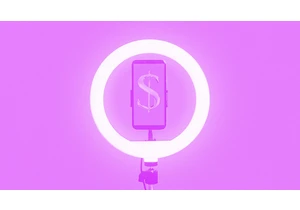In the history of the National Assessment of Educational Progress (NAEP), eighth-grade reading scores have never been this low.
According to new data, 33% of eighth graders in the United States have “below basic” reading levels. That’s even below the sub-proficient level, “basic,” at which 37% of eighth graders score. The NAEP has been administering their reading assessment since 1992, when 31% of eighth graders were “below basic.” But then it went down; in 2013, that “below basic” figure reached a low of 22%. Now, it’s reached an all-time peak.
When reading scores go down, blame is inevitably pointed at teachers. Twenty-four years ago, then-President George Bush effectively tied schools’ Title I funding to their ability to show testing progress. But the smartphone era has brought us dwindling attention spans and plummeting reading levels. The issue isn’t the teachers; it’s the tech.
How bad is tech for children’s reading?
This dip in reading scores extends beyond the teachers. In a new paper for the American Enterprise Institute, researcher Nat Malkus tracked the rise and fall in student testing scores over the past decades. Since the pandemic, performance has sharply declined for students. But adults have also been scoring poorly on performance assessments, with those scores moving in a parallel trend to children. It must be something beyond the classroom, Malkus surmises, that is dumbing us (and our children) down.
While Malkus is reluctant to point the finger at one specific external factor, there’s a strong case for tech. In the Surgeon General’s 2023 advisory on youth mental health, they noted that excessive social media usage could lead to changes or malformation of the amygdala, the part of the brain associated with learning. Social media is also rapidly destroying our focus. Per psychologist Gloria Mark, the average computer-focused attention span in 2004 was 2.5 minutes; now, it’s 47 seconds. When we cannot focus on long-form tasks, reading is left by the wayside.
But the research here is patchy. Much of it is limited to the medium; there’s a long-proven track record that students’ comprehension goes down when material is read off a screen, or that reading online ruptures the ability to consume large quantities of text. Discourse has also localized around mental health, like to set age restrictions on social media platforms, or even a cigarette-style hazard warning. (Across most of these conversations, Jonathan Haidt remains the perennial boogeyman, loved by his fans and reviled by his critics.)
But these overlapping timelines are hard to ignore. Reading levels plummeted in the pandemic, the same period in which technology usage (and over-usage) spiked. The NAEP’s “below basic” reading statistic first began climbing in 2019, the same year TikTok reached one-billion installs. While more than half of American kids play Roblox, 29% of 13-year-olds say they’ve never or hardly ever read for fun.
Can reading levels recover?
There are small but mighty movements to break up the stranglehold tech has over America’s children. New York is pushing closer to an in-school cellphone ban. Other states across the partisan divide, from California to Florida, have already instituted their own versions of the policy. More parents are cutting their kids off from YouTube, TikTok, and Fortnite.
But the damage may already be done. Eighth graders in 2019 (when the “below basic” reading level percentage started to tick up) are now in college. And, among today’s college students, reading is on the decline. Professors are dealing with classrooms full of students who are unwilling or unable to complete basic reading assignments.
Those reading levels likely won’t turn around anytime soon. When the next, even-lower batch of statistics comes out, let’s not blame the teachers. It’s our iPhones that deserve the scrutiny.
Войдите, чтобы добавить комментарий
Другие сообщения в этой группе

Child psychologists tell us that around the age of five or six, children begin to seriously contemplate the world around them. It’s a glorious moment every parent recognizes—when young minds start

During January’s unprecedented wildfires in Los Angeles, Watch Duty—a digital platform providing real-time fire data—became the go-to app for tracking the unfolding disaster and is credit



Yahoo’s bet on creator-led content appears to be paying off. Yahoo Creators, the media company’s publishing platform for creators, had its most lucrative month yet in June.
Launched in M

From being the face of memestock mania to going viral for inadvertently stapling the screens of brand-new video game consoles, GameStop is no stranger to infamy.
Last month, during the m

The technology industry has always adored its improbably audacious goals and their associated buzzwords. Meta CEO Mark Zuckerberg is among the most enamored. After all, the name “Meta” is the resi
